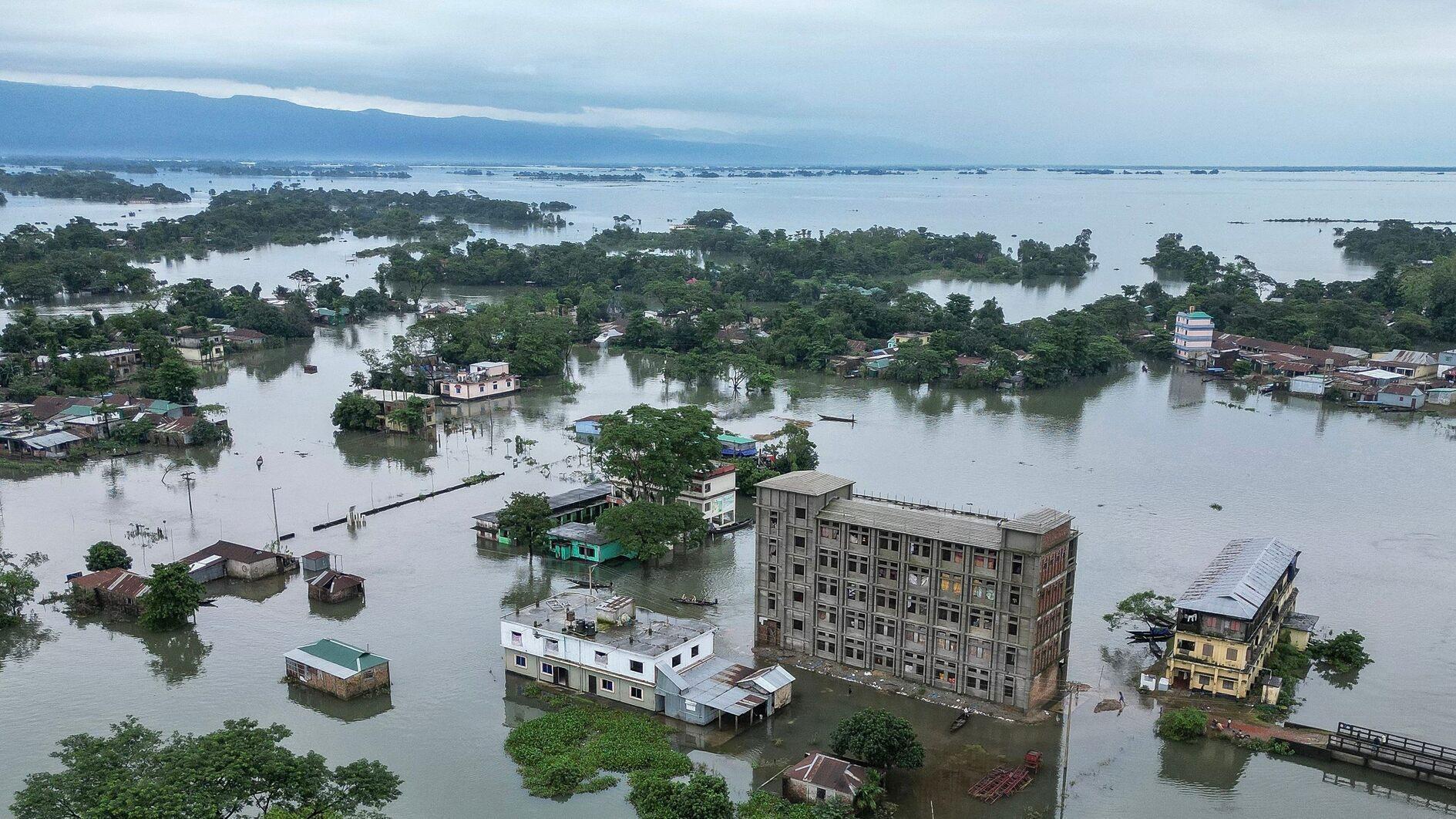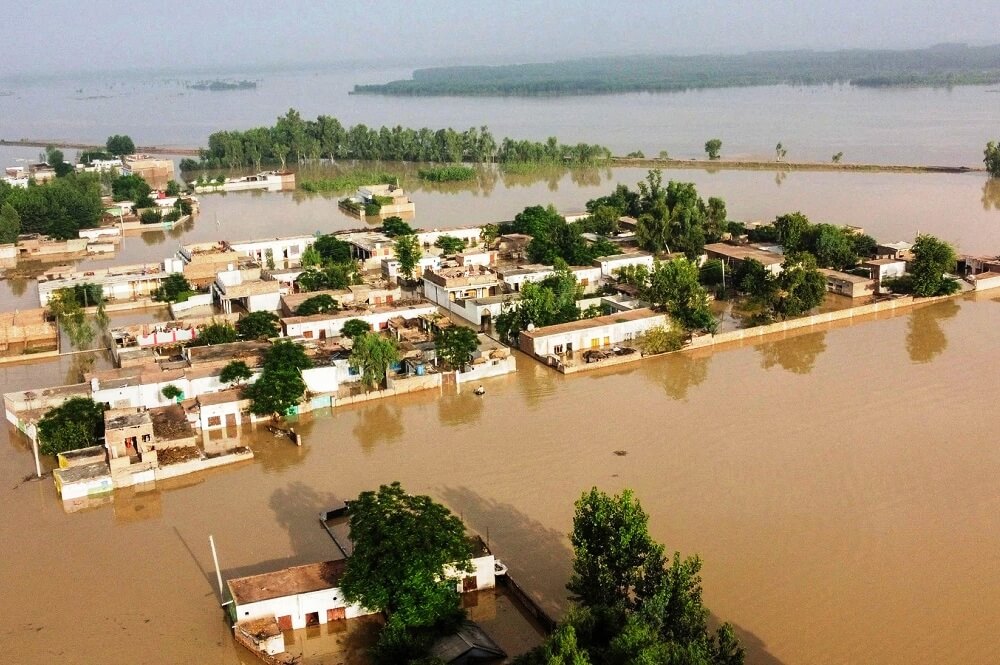Climate change is no longer a distant threat—it is already reshaping India’s environment, economy, and daily life. From scorching heatwaves to devastating floods, unpredictable monsoons, and rising sea levels, the country is facing a crisis that affects millions. As one of the most climate-vulnerable nations, India must urgently address these challenges before the damage becomes irreversible.
1. Rising Temperatures and Deadly Heatwaves
India has witnessed a steady rise in temperatures over the past few decades. Heatwaves have become more frequent and intense, particularly in states like Rajasthan, Uttar Pradesh, and Madhya Pradesh. In 2022, several regions recorded temperatures above 45°C (113°F), leading to heat-related illnesses and deaths.
Extreme heat also impacts agriculture, reducing crop yields and increasing water demand. Urban areas suffer from the urban heat island effect, where concrete structures absorb and trap heat, making cities even hotter. Rising temperatures also put immense pressure on electricity consumption, as millions rely on air conditioning and cooling systems to survive.
2. Unpredictable Monsoons and Flooding
The Indian monsoon, which is crucial for agriculture and water resources, has become increasingly erratic. Some regions experience droughts, leading to crop failures and water shortages, while others face excessive rainfall, causing devastating floods.
Cities like Mumbai, Chennai, and Kolkata regularly face flooding due to heavy monsoons and inadequate drainage systems. In rural areas, unpredictable rainfall patterns threaten farmers’ livelihoods, forcing many to migrate to urban centers in search of work. These shifts put additional pressure on cities, leading to overcrowding and infrastructure strain.
3. Melting Glaciers and Water Crisis
The Himalayan glaciers, which serve as a crucial water source for millions in northern India, are melting at an alarming rate due to rising temperatures. This threatens major rivers like the Ganges, Yamuna, and Brahmaputra, which depend on glacier-fed waters.
As glaciers shrink, India faces the dual challenge of short-term flooding from excessive meltwater and long-term water scarcity as these glaciers disappear. The impact is particularly severe in states like Himachal Pradesh and Uttarakhand, where glacial meltwater supports drinking water and agriculture.
4. Rising Sea Levels and Coastal Threats
India’s long coastline is at high risk due to rising sea levels caused by global warming. Coastal cities like Mumbai, Chennai, and Kolkata are already witnessing increasing instances of high tides, erosion, and seawater intrusion.
Villages in West Bengal and Odisha have reported entire stretches of land being swallowed by the sea, forcing climate refugees to relocate inland. If global temperatures continue to rise, millions of people could be displaced, leading to social and economic disruptions.
5. Impact on Agriculture and Food Security
Climate change directly threatens India’s agricultural sector, which supports over 50% of the population. Rising temperatures, irregular monsoons, and increased pest infestations are reducing crop yields of staples like wheat, rice, and pulses.
Drought-prone regions, especially in Maharashtra, Karnataka, and Andhra Pradesh, are experiencing frequent crop failures, pushing farmers into debt and financial distress. If these trends continue, food shortages and rising prices could become a severe issue, affecting the country’s economy and food security.
6. Air Pollution and Climate Change
India’s air pollution crisis is closely linked to climate change. The excessive burning of fossil fuels, industrial emissions, and vehicular pollution contribute to both global warming and severe health problems.
Cities like Delhi, Lucknow, and Patna frequently experience hazardous air quality levels, leading to respiratory diseases and reduced life expectancy. Tackling air pollution is essential not only for public health but also for reducing India’s carbon footprint.
What Can Be Done?

To combat climate change, India must take urgent action at multiple levels:
- Promote Renewable Energy: Expanding solar, wind, and hydro energy to reduce reliance on fossil fuels.
- Improve Water Conservation: Encouraging rainwater harvesting and sustainable irrigation practices.
- Strengthen Disaster Preparedness: Enhancing flood control measures and building climate-resilient infrastructure.
- Reduce Deforestation: Protecting forests and increasing afforestation efforts.
- Invest in Sustainable Agriculture: Supporting farmers with climate-resistant crops and better irrigation systems.
- Curb Air Pollution: Implementing stricter vehicle emission standards and promoting electric vehicles.
Conclusion
Climate change is not a future problem—it is happening now. India stands at a crossroads, where urgent action is needed to protect its people, economy, and natural resources. The government, businesses, and citizens must come together to implement sustainable solutions and reduce the country’s vulnerability to climate-related disasters.
If we act now, we can slow down the damage and create a more resilient and sustainable future for India. The time for action is now!

